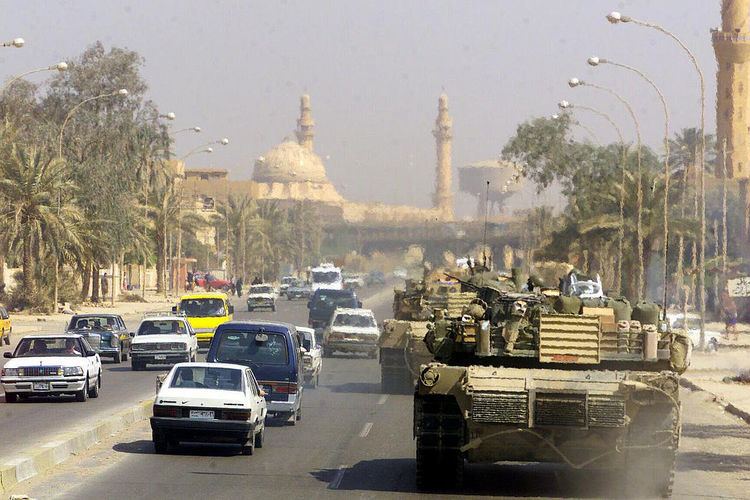 | ||
The following is a partial accounting of financial costs of the 2003 Iraq War up the United States and the United Kingdom, the two largest non-Iraqi participants of the multinational force in Iraq.
Contents
Direct costs
The costs of the 2003-2010 Iraq War are often contested, as academics and critics have unearthed many hidden costs not represented in official estimates. The most recent major report on these costs come from Brown University in the form of the Costs of War, which totaled just over $1.1 trillion. The Department of Defense's direct spending on Iraq totaled at least $757.8 billion, but also highlighting the complementary costs at home, such as interest paid on the funds borrowed to finance the wars.
Those figures are dramatically higher than typical estimates published just prior to the start of the Iraq War, many of which were based on a shorter term of involvement. For example, in a March 16, 2003 Meet the Press interview of Vice President Dick Cheney, held less than a week before the Iraq War began, host Tim Russert reported that "every analysis said this war itself would cost about $80 billion, recovery of Baghdad, perhaps of Iraq, about $10 billion per year. We should expect as American citizens that this would cost at least $100 billion for a two-year involvement."
Appropriations
Indirect and delayed costs
According to a Congressional Budget Office (CBO) report published in October 2007, the U.S. wars in Iraq and Afghanistan could cost taxpayers a total of $2.4 trillion by 2017 when counting the huge interest costs because combat is being financed with borrowed money. The CBO estimated that of the $2.4 trillion long-term price tag for the war, about $1.9 trillion of that would be spent on Iraq, or $6,300 per U.S. citizen. The most recent CBO report, which was conducted after the end of combat operations and hence did not have to estimate future costs, was released in December 2014 and placed the cost at $0.815 trillion.
Joseph Stiglitz, former chief economist of the World Bank and winner of the Nobel Prize in Economics, and Linda Bilmes of Harvard University, have stated the total costs of the Iraq War on the US economy will be three trillion dollars in a moderate scenario, described in their book The Three Trillion Dollar War and possibly more in the most recent published study, published in March 2008. Stiglitz has stated: "The figure we arrive at is more than $3 trillion. Our calculations are based on conservative assumptions...Needless to say, this number represents the cost only to the United States. It does not reflect the enormous cost to the rest of the world, or to Iraq."
A 2013 updated study pointed out that U.S. medical and disability claims for veterans after a decade of war had risen to $134.7 billion from $33 billion two years earlier.
The extended combat and equipment loss have placed a severe financial strain on the U.S Army, causing the elimination of non-essential expenses such as travel and civilian hiring.
Military equipment lost
The U.S. has lost a number of pieces of military equipment during the war. The following statistics are from the Center for American Progress; and they are only approximations that also include vehicles lost in non-combat-related accidents as of 2006.
2006 Land equipment approximation
2006 Air equipment
In June 2006, the Army said that the cost of replacing its depleted equipment tripled from that of 2005. As of December 2006, according to government data reported by the Washington Post, the military stated that nearly 40% of the army’s total equipment has been to Iraq, with an estimated yearly refurbishment cost of $US 17 billion. The military states that the yearly refurbishment cost has increased by a factor of ten compared to that of the pre-war state. As of December 2006 approximately 500 M1 tanks, 700 Bradley Fighting Vehicles and 1000 Humvees are awaiting repair in US military depots.
In September 2007, the Congressional Budget Office produced a report outlining the Army's Reset Program and included some combat loss numbers.
2007 Land equipment approximation
U.K. war costs
As of March 2006, approximately £4.5 billion ($6.8 billion) had been spent by the United Kingdom in Iraq. All of this money has come from a government fund called the "Special Reserve" which has a current allocation of £7.4 billion ($56.29 billion). According to the Ministry of Defence, the total cost of UK military operations in Iraq from 2003 to 2009 was £8.4bn.
Official calculations stated that the Iraq and Afghanistan wars combined cost £20.3 billion (up to but not beyond June 2010).
